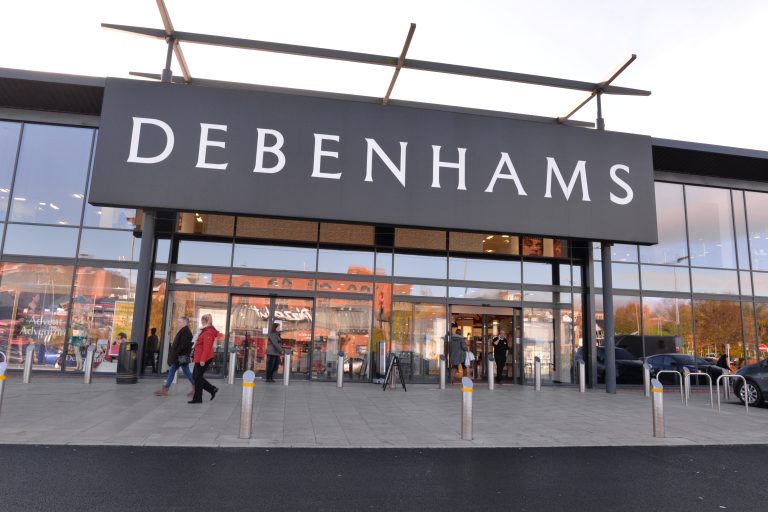Debenhams, a name synonymous with British retail, has a long history that spans over two centuries. Founded in 1778 as a single draper’s shop in London, the company grew into one of the UK’s most beloved department store chains. At its peak, Debenhams operated over 150 stores and became a central pillar of the high street shopping experience. However, the brand’s journey took a tumultuous turn in recent years, leading to its collapse and subsequent rebirth as an online retailer.
The downfall of Debenhams was a significant moment for the UK retail sector, marking the end of an era. The combination of shifting consumer habits, increased competition from online giants, and internal financial struggles led to its closure in 2021. Yet, the brand has since been revived by Boohoo Group, transitioning to a purely digital format. This article explores the rise and fall of Debenhams, its impact on the high street, and its current state as an online retailer.
Key Information on Debenhams
| Aspect | Details |
|---|---|
| Founded | 1778, London, UK |
| Peak Store Count | Over 150 stores in the UK |
| Collapse | Entered administration in 2019, ceased trading in 2021 |
| Acquisition | Bought by Boohoo Group in January 2021 |
| Current Status | Operates exclusively online |
| 2024 Revenue | Estimated £400 million* |
| Net Worth | Approx. £1.5 billion (Boohoo Group valuation)* |
| Impact | Closure affected thousands of jobs, significant high street presence lost |
*For more information, visit Boohoo Group’s official website.
The Rise of Debenhams: A Retail Titan
Debenhams’ journey began with modest roots. From its inception as a drapery shop, the brand expanded rapidly, offering a wide range of goods from fashion to homeware. By the mid-20th century, Debenhams had established itself as a household name, with stores in prime locations across the UK. The retailer’s ability to cater to diverse customer needs made it a favourite among British families.
Throughout the 1980s and 1990s, Debenhams embraced modernisation, investing in its store network and launching exclusive product ranges. Brands such as Designers at Debenhams were a hit, offering high-quality, affordable fashion collaborations with notable designers.
The Fall: What Went Wrong for Debenhams?
Despite its storied history, Debenhams’ troubles began to surface in the early 2010s. The rise of e-commerce giants like Amazon and the fast-fashion boom led by brands such as ASOS and Boohoo disrupted traditional retail models. Debenhams, burdened by high rents and outdated practices, struggled to compete.
In 2019, the company entered administration, marking the beginning of its decline. The COVID-19 pandemic in 2020 exacerbated its financial woes, forcing the permanent closure of all its physical stores in 2021. Thousands of employees were left jobless, and the UK high street suffered a significant blow with the loss of such a major player.
Debenhams’ Impact on the UK High Street
The closure of Debenhams was a defining moment for the UK’s high street. As one of the most recognisable department store chains, its presence had drawn shoppers to town centres for decades. Its demise left many high streets with large, vacant spaces, contributing to the so-called “death of the high street” phenomenon.
Beyond its physical impact, the fall of Debenhams highlighted the changing landscape of consumer behaviour. Shoppers increasingly preferred the convenience and variety offered by online platforms, leaving traditional retailers struggling to keep up.
A Digital Rebirth: Debenhams Online
Following the brand’s collapse, Boohoo Group acquired Debenhams for £55 million in early 2021. The purchase was part of Boohoo’s strategy to diversify its portfolio and expand into new markets, including beauty and homeware. Debenhams was relaunched as an online-only retailer, with Boohoo leveraging its expertise in digital commerce to breathe new life into the brand.
The online version of Debenhams now offers a curated selection of products, including fashion, beauty, and home essentials. The company has also retained its popular beauty and fragrance ranges, which were key drivers of in-store footfall in the past.
How Is Debenhams Performing Today?
Under Boohoo’s ownership, Debenhams has shown promising signs of growth in the digital realm. Its estimated revenue for 2024 stands at around £400 million, driven by a strong online presence and strategic marketing campaigns. While the figure pales compared to its high street heyday, it indicates a successful adaptation to the e-commerce landscape.
The brand’s new model also benefits from reduced overhead costs, as it no longer operates physical stores. Boohoo’s data-driven approach to inventory and customer insights ensures that Debenhams remains competitive in the crowded online marketplace.
Can Debenhams Reclaim Its Glory?
While Debenhams’ future as an online retailer looks bright, challenges remain. The e-commerce sector is fiercely competitive, and the brand must continue to innovate to maintain its relevance. Moreover, it must win over loyal high street customers who may have drifted to other brands during its absence.
Nonetheless, the revival of Debenhams serves as a testament to the resilience of iconic British brands. With a strong digital strategy and the backing of Boohoo Group, Debenhams is well-positioned to navigate the evolving retail landscape and potentially reclaim a significant share of the market.


